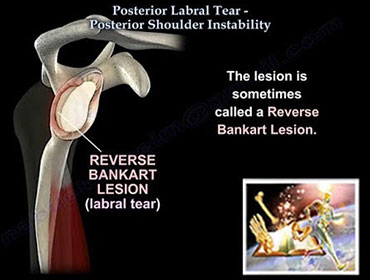Posterior Labral Repair
The shoulder joint is a ball-and-socket joint that joins the upper arm's (humerus) bone with the shoulder blade (scapula). The glenoid cavity is the shallow socket of the scapula. A wide ligament that surrounds and stabilises the joint is known as the capsule. The glenoid labrum is a cartilage rim that attaches to the glenoid rim. When the arm is pushed out of its socket, the capsule and labrum rupture, usually from the glenoid cavity's margin. When the humerus comes entirely out of the socket and stays out, it is called a dislocation. When the humerus comes partially out of the socket and then slips back in, this is known as a subluxation.
When the capsule breaks away from the glenoid rim, the shoulder becomes unstable and frequently dislocates or subluxes. The most common direction for the humeral head to dislocate is toward the front of the body (anteriorly); this typically occurs if the arm goes too far behind the body when the arm is \sin an overhead position (such as when throwing a ball). While power is exerted toward the back of the shoulder, the humeral head can dislocate toward the back of the body (posteriorly); this can happen when falling forward on an outstretched arm, convulsions, electrical shocks, or blocking with the arm straight ahead in football.
It's possible for the shoulder to be insecure in more than one direction. Individuals with loose joints (double jointed) are more prone to multidirectional instability.
To help confirm the diagnosis of instability several different tests are helpful and may be employed:

